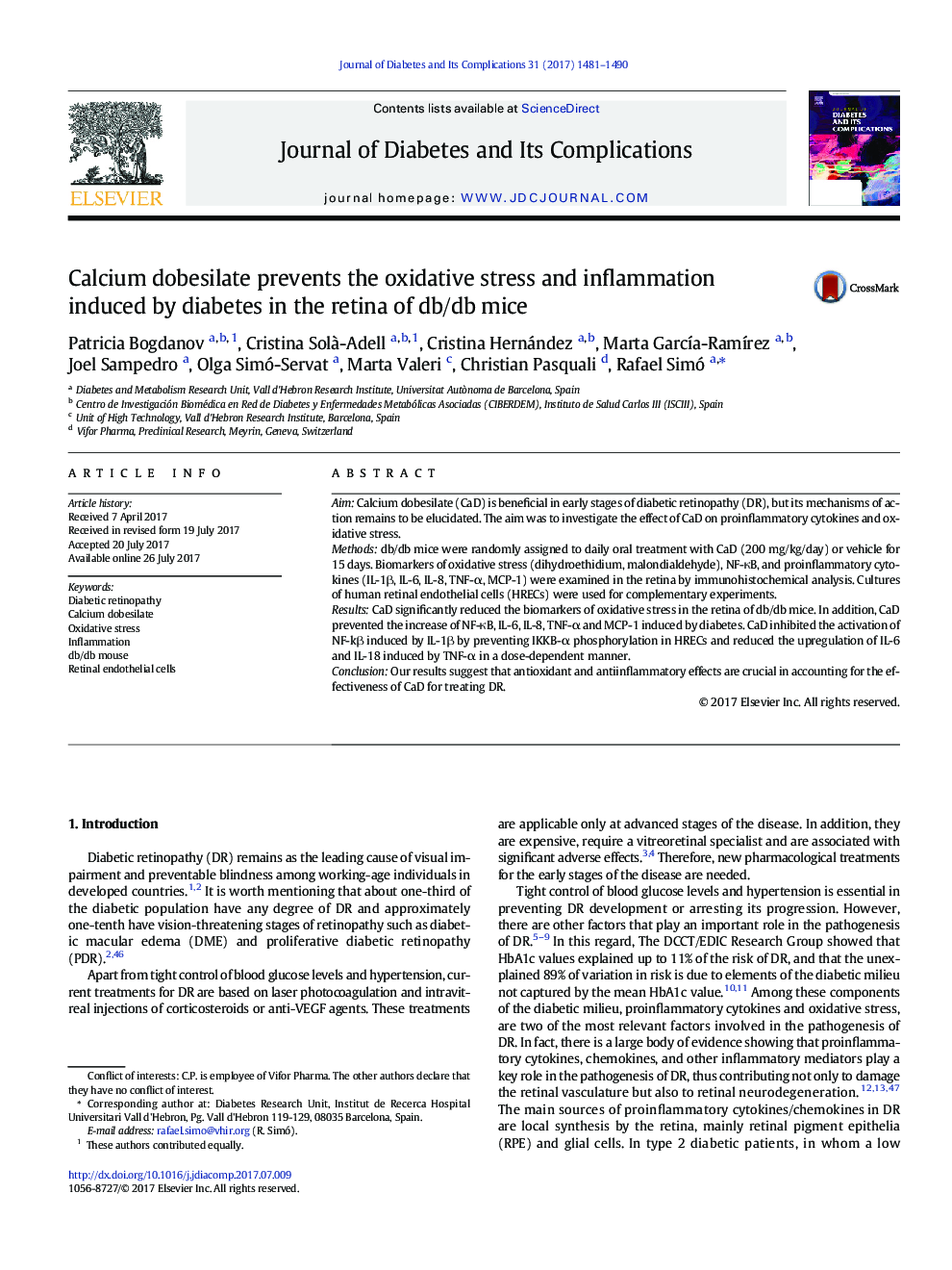| Article ID | Journal | Published Year | Pages | File Type |
|---|---|---|---|---|
| 5588083 | Journal of Diabetes and its Complications | 2017 | 10 Pages |
â¢Antioxidant and antiinflammatory effects are crucial in accounting for the effectiveness of calcium dobesilate for treating early stages of diabetic retinopathy.â¢CaD prevented the increase of NF-κB, IL-6, IL-8, TNF-α and MCP-1 induced by diabetes in the retinas of db/db mice.â¢CaD inhibited the activation of NF-kβ induced by IL-1β by preventing IKKB-α phosphorylation in HRECs and reduced the upregulation of IL-6 and IL-18 induced by TNF-α in a dose-dependent manner.
AimCalcium dobesilate (CaD) is beneficial in early stages of diabetic retinopathy (DR), but its mechanisms of action remains to be elucidated. The aim was to investigate the effect of CaD on proinflammatory cytokines and oxidative stress.Methodsdb/db mice were randomly assigned to daily oral treatment with CaD (200 mg/kg/day) or vehicle for 15 days. Biomarkers of oxidative stress (dihydroethidium, malondialdehyde), NF-κB, and proinflammatory cytokines (IL-1β, IL-6, IL-8, TNF-α, MCP-1) were examined in the retina by immunohistochemical analysis. Cultures of human retinal endothelial cells (HRECs) were used for complementary experiments.ResultsCaD significantly reduced the biomarkers of oxidative stress in the retina of db/db mice. In addition, CaD prevented the increase of NF-κB, IL-6, IL-8, TNF-α and MCP-1 induced by diabetes. CaD inhibited the activation of NF-kβ induced by IL-1β by preventing IKKB-α phosphorylation in HRECs and reduced the upregulation of IL-6 and IL-18 induced by TNF-α in a dose-dependent manner.ConclusionOur results suggest that antioxidant and antiinflammatory effects are crucial in accounting for the effectiveness of CaD for treating DR.
